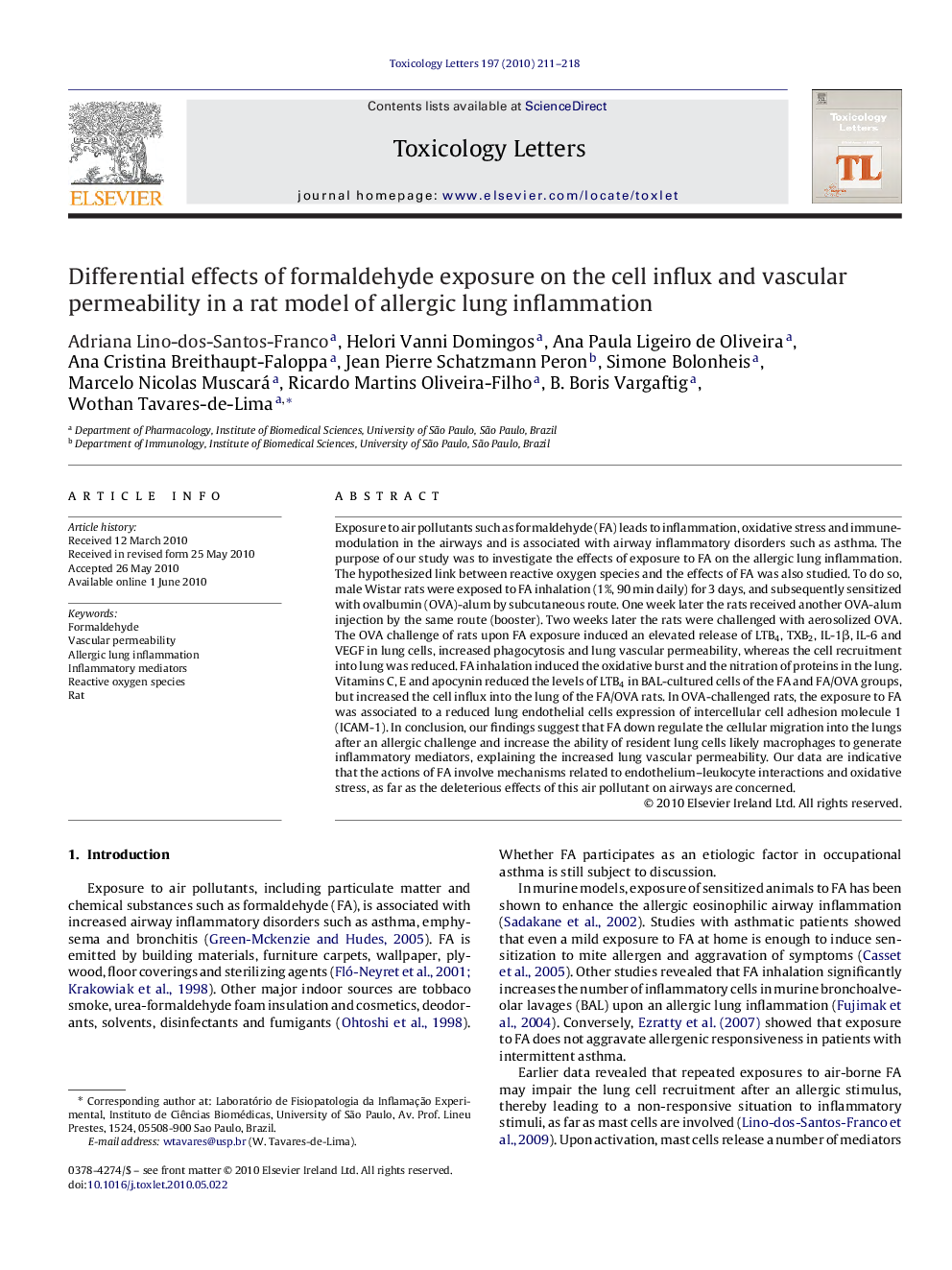| کد مقاله | کد نشریه | سال انتشار | مقاله انگلیسی | نسخه تمام متن |
|---|---|---|---|---|
| 2600718 | 1133281 | 2010 | 8 صفحه PDF | دانلود رایگان |

Exposure to air pollutants such as formaldehyde (FA) leads to inflammation, oxidative stress and immune-modulation in the airways and is associated with airway inflammatory disorders such as asthma. The purpose of our study was to investigate the effects of exposure to FA on the allergic lung inflammation. The hypothesized link between reactive oxygen species and the effects of FA was also studied. To do so, male Wistar rats were exposed to FA inhalation (1%, 90 min daily) for 3 days, and subsequently sensitized with ovalbumin (OVA)-alum by subcutaneous route. One week later the rats received another OVA-alum injection by the same route (booster). Two weeks later the rats were challenged with aerosolized OVA. The OVA challenge of rats upon FA exposure induced an elevated release of LTB4, TXB2, IL-1β, IL-6 and VEGF in lung cells, increased phagocytosis and lung vascular permeability, whereas the cell recruitment into lung was reduced. FA inhalation induced the oxidative burst and the nitration of proteins in the lung. Vitamins C, E and apocynin reduced the levels of LTB4 in BAL-cultured cells of the FA and FA/OVA groups, but increased the cell influx into the lung of the FA/OVA rats. In OVA-challenged rats, the exposure to FA was associated to a reduced lung endothelial cells expression of intercellular cell adhesion molecule 1 (ICAM-1). In conclusion, our findings suggest that FA down regulate the cellular migration into the lungs after an allergic challenge and increase the ability of resident lung cells likely macrophages to generate inflammatory mediators, explaining the increased lung vascular permeability. Our data are indicative that the actions of FA involve mechanisms related to endothelium–leukocyte interactions and oxidative stress, as far as the deleterious effects of this air pollutant on airways are concerned.
Journal: Toxicology Letters - Volume 197, Issue 3, 1 September 2010, Pages 211–218